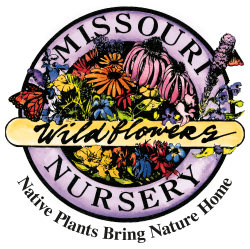Prairie Cordgrass, with its impressive height and dense growth habit, offers several practical uses. This hardy grass is particularly effective in erosion control, as its extensive root system stabilizes soil and prevents the loss of valuable topsoil. Spartina pectinata is also well-suited for rain gardens and waterway restoration projects, as it can tolerate occasional flooding and helps filter pollutants from runoff.
Dense stands of this grass offer shelter and nesting sites for various bird species, making it an excellent addition to naturalized areas and wildlife gardens. Prairie cordgrass is a food source for a number of insects and several moth species rely on it exclusively.
Because of its ability to spread rhizomatously, it isn't a great choice for small, formal flowerbeds unless spreading can be controlled either by mowing or physical barrier (a parking lot island would be suitable if kept wet enough). In spaces where it can form a large colony, it is very attractive and earns a 4-Star Formalness Rating.
Uses: Erosion, wildlife, flood tolerant
Bloom time: August - September (though sometimes as early as June)
Height: 5 to 7 feet
Space: 1 to 2 feet
Sun: Full sun
Moisture: Average to moist








